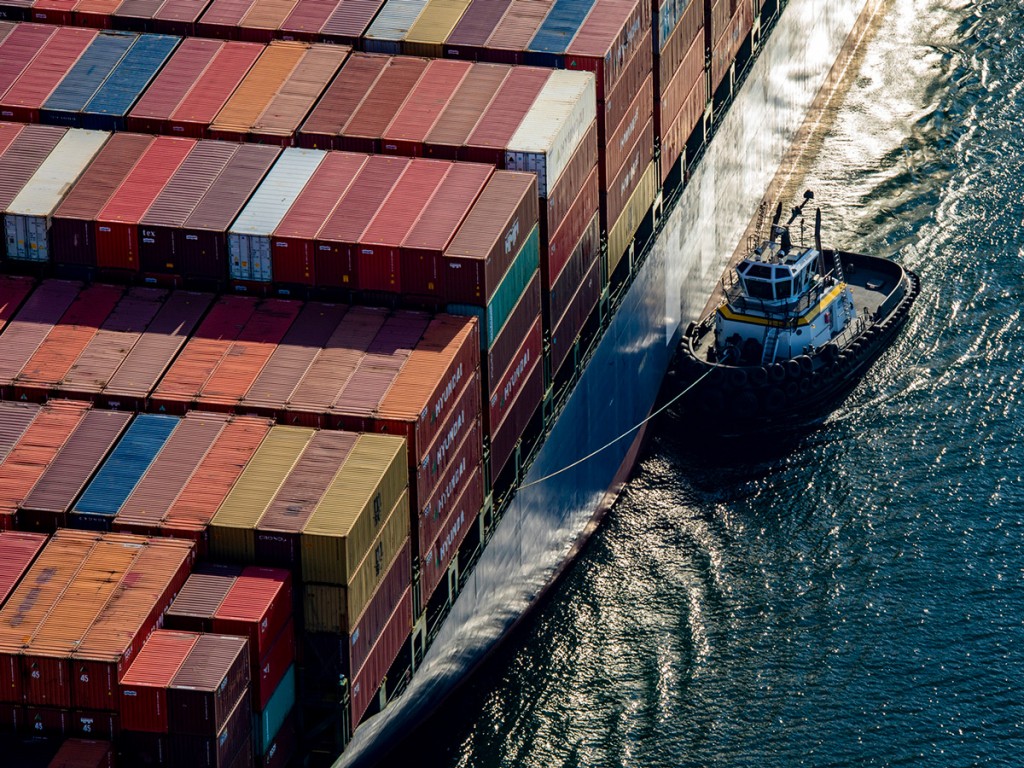Stephanie Loomis, vice president, International Procurement at CargoTrans, Inc. based in Manhasset, New York, said that higher Trans-Pacific freight costs are making imports of low-priced products from Asia increasingly uncompetitive in the United States.

Loomis, who spoke at the Trans-Pacific Maritime conference last week at Long Beach, is a former vice-president at Vanguard Logistics Services and former senior director Transpacific Business Development at DB Schenker.
“Decent sized forwarders even mid-sized forwarders were then able to secure their contracts and their allocations at a rate level that was pretty close to what the biggest retailers and importers got. Maybe a few hundred dollars higher here or there. It used to be… we could get 50% of our allocation fixed and 50% at the spot level. The carriers started squeezing that about five years ago and so we got more of a 60%/40%, maybe even a 70%/30% allocation, split smaller and smaller on that fixed rate. What we’re seeing this year is that the carriers want the best customers … that align with their service levels ... If you’re moving a tremendous amount of containers into the interior of the country, you’re not necessarily going to get as strong a contract and rate level as someone that will discharge the cargo in LA or New York. The carriers want those boxes to turn as fast as possible. This year they cherry picked the customers that they wanted from the very largest importers and then they began a secondary round of negotiations with the smaller importers and forwarders and the rate levels went up pretty dramatically. Unlike in years past, when we were not far from a Wal-Mart rate, a Target rate, now you’re seeing rate levels that are thousands of dollars more than the big guys are paying … The competitiveness for the small-sized importer is obliterated.”
She noted that before the pandemic, the freight rates from Asia to U.S. West Coast were under $2,000, “Today, we’re hearing that the largest BCOs (Beneficial Cargo Owners) are paying between $6,000 to $8,000 per container. For many small importers, the freight rate is turning out to be the spot rate. That spot rate used to be close to the contract rates for the big BCOs but that has now changed and the spot rate can be anything from $10,000 to $15,000 dollars (per container).”
In addition, importers and exporters are faced with higher costs for IPI cargo (Interior Point Intermodal). These are inbound container freight moves from a port to a shipper’s door transported via a rail intermodal move. “In 2021, the ocean carriers weren’t accepting IPI cargo so that if you had a container that was going by rail from Los Angeles to Chicago you couldn’t book that cargo on rail because the carriers wanted to unload the containers at the port and get the empties back to Asia.”
Loomis hopes this situation will improve in 2022 as congestion eases at U.S. ports.
She notes that intermodal rail rates are rising. She said the IPI rate was $1,500 to Chicago (from the Port of Los Angeles.) and that we combined ocean and rail rates from Asia to Chicago were around $3300 as recently as 2019.
“Last year the rail rate temporarily jumped to $15,000 to Chicago and so the importers were forced to transload their containers and truck them from Los Angeles to Chicago or wherever the final destination. The transload rate for trucking from Los Angeles to Chicago was around $5,000.”
“Up to 2019, we had rates to Chicago of $3,300 [From Asia] and now it’s $15,000 and up and I have seen it as high as $25,000… to get to Chicago last summer when people were desperate, and the carriers wouldn’t take those bookings to places like Chicago. It’s crushing … you’re going to see low-value commodities just not be imported anymore.”
The changes in the ocean freight rate and the inland IPI rate have had the effect that the import of lower cost commodity products that cost $30 dollars or less is now becoming uneconomical to source from China. The attraction of importing abroad changes when the freight rate is no longer $1800 per box.
In addition, there was the problem of delays and congestion at the ports, delaying deliveries and creating shortages that drove up prices: “I think importers can benefit from hiring a freight forwarder in this environment as forwarders have the expertise to address this complicated freight market and provide value to the importer.”
For U.S. agricultural exporters having problems booking space on ships returning to Asia, Loomis points out that ocean carriers are less motivated to carry their products back to Asia “because the high rate for imports make the faster return of empty containers to be filled with higher priced imports from Asia more attractive. I would advise agricultural exporters to accept that prices for transporting their goods to Asia is going to go up and that they need to turn around their containers at a much faster rate so that they are attractive and economical moves for the carriers. The days when it was advantageous to carry loaded agricultural exports back to Asia has changed.”

